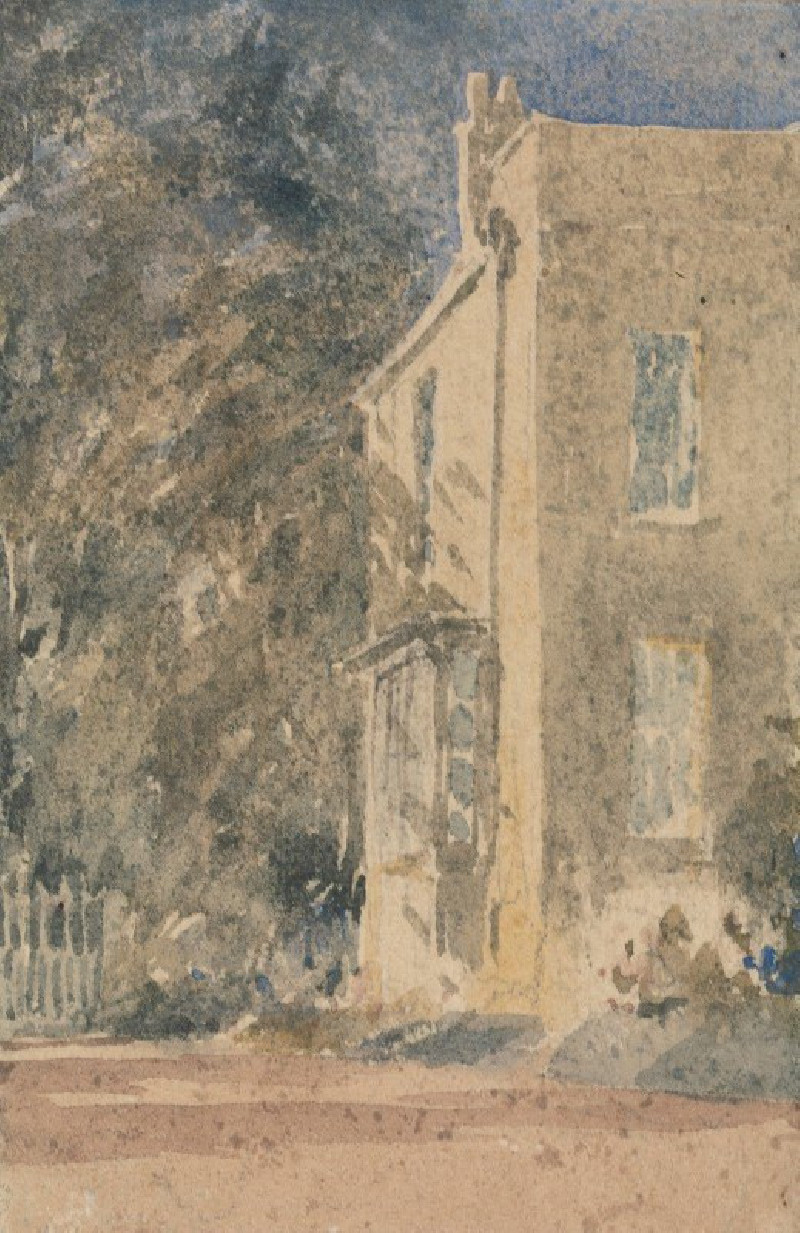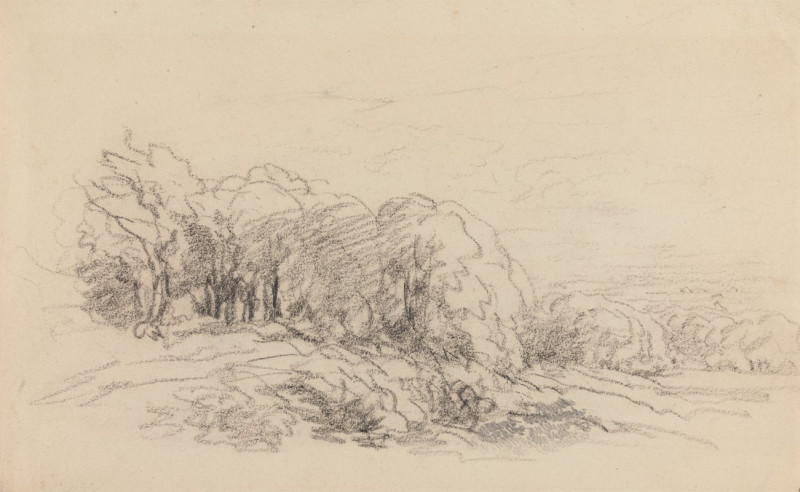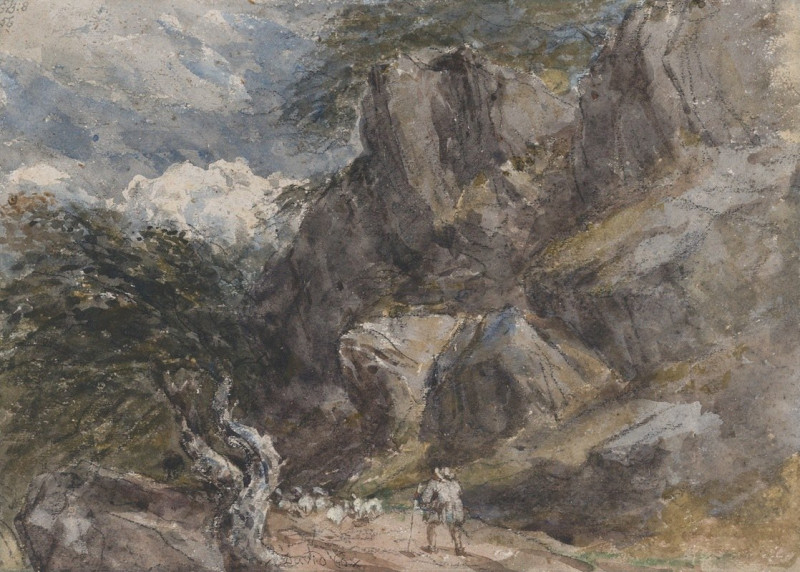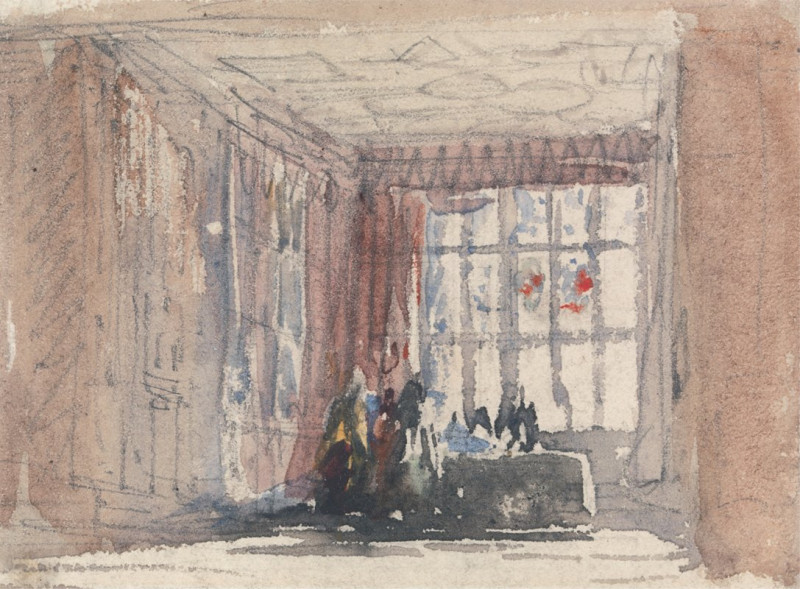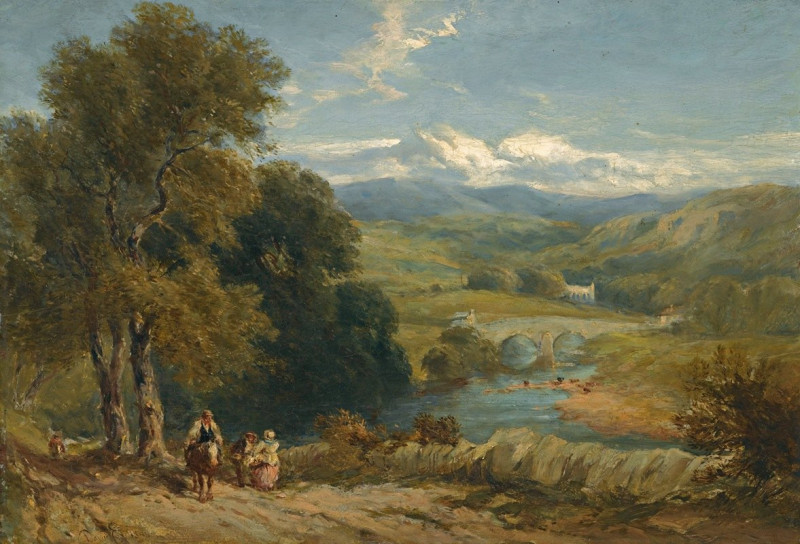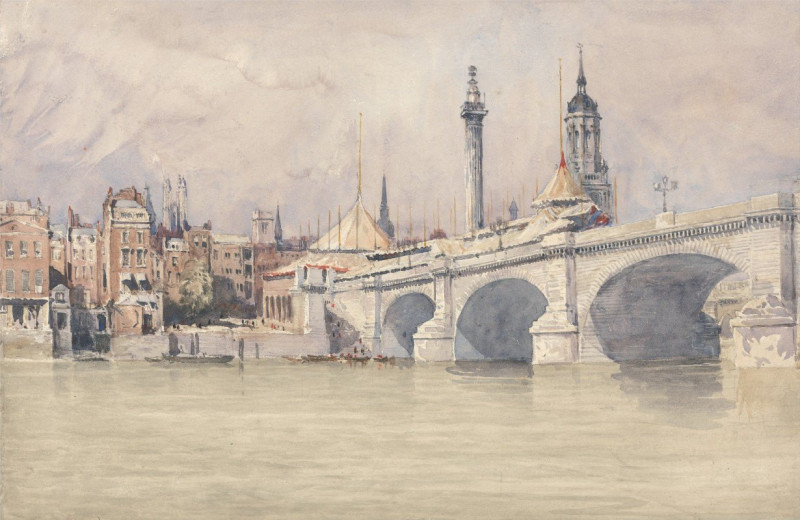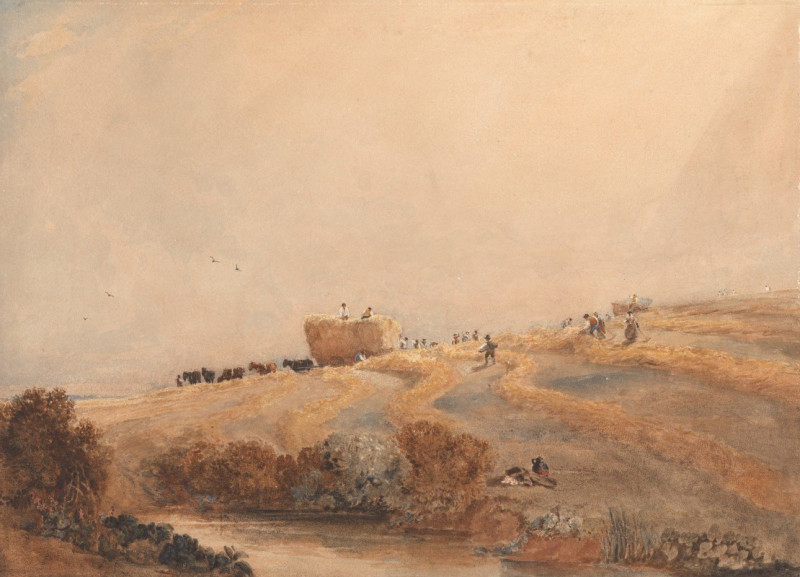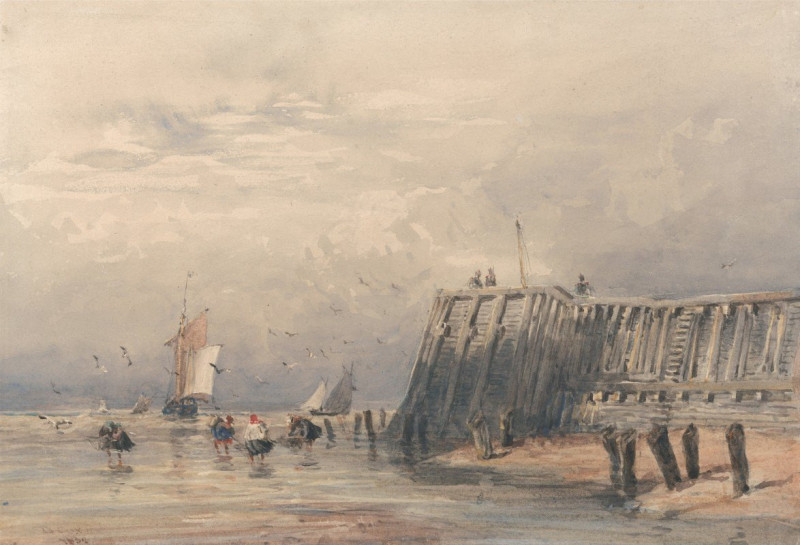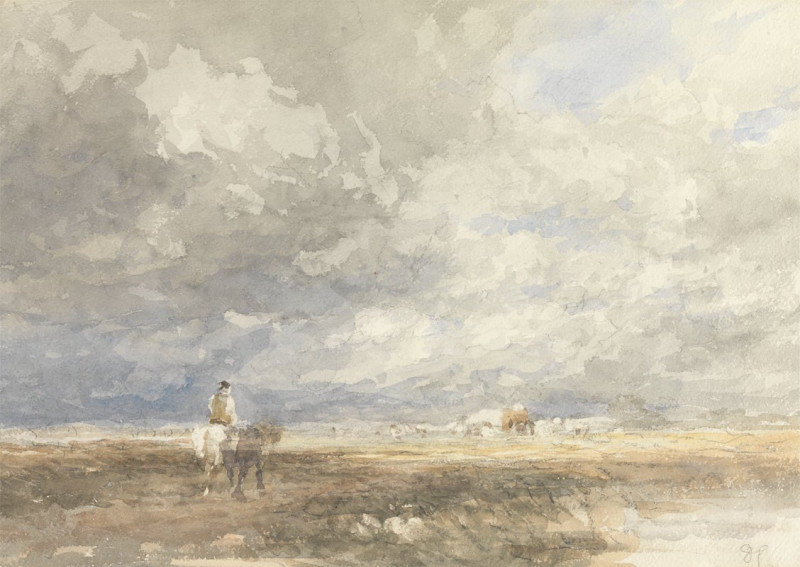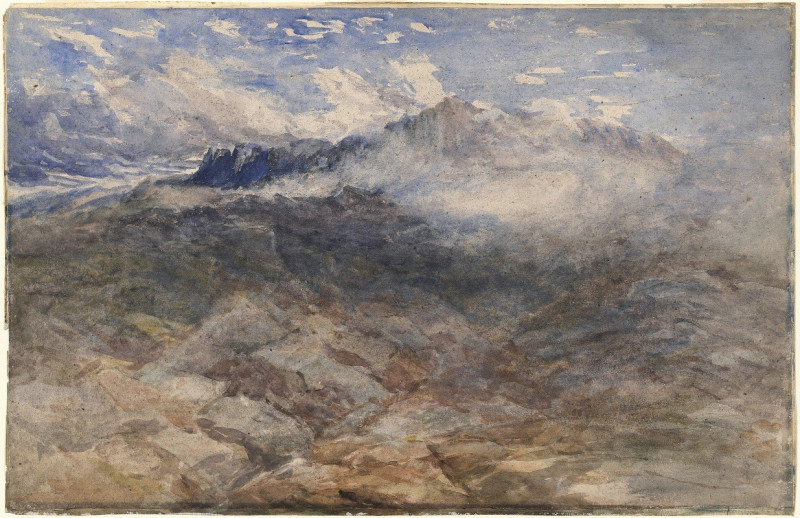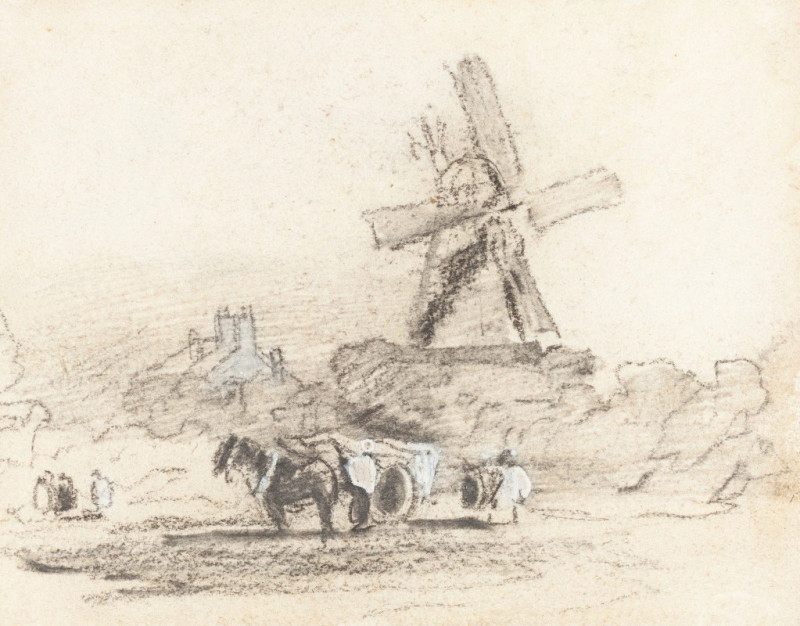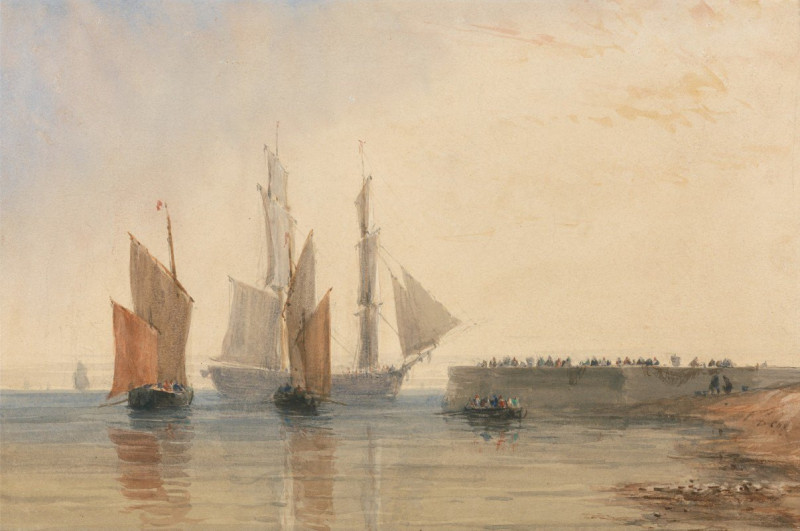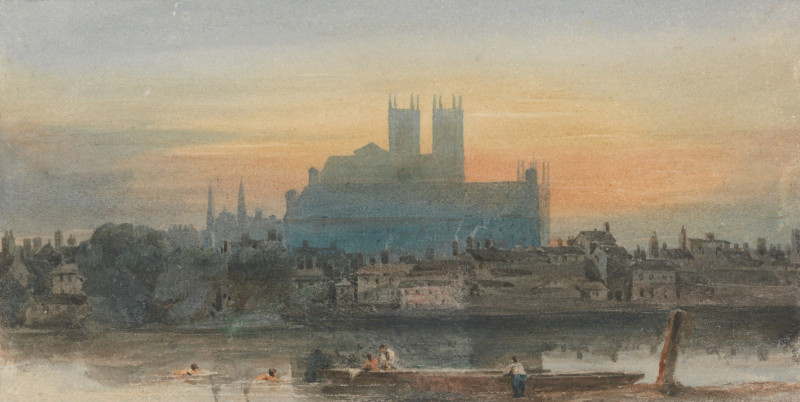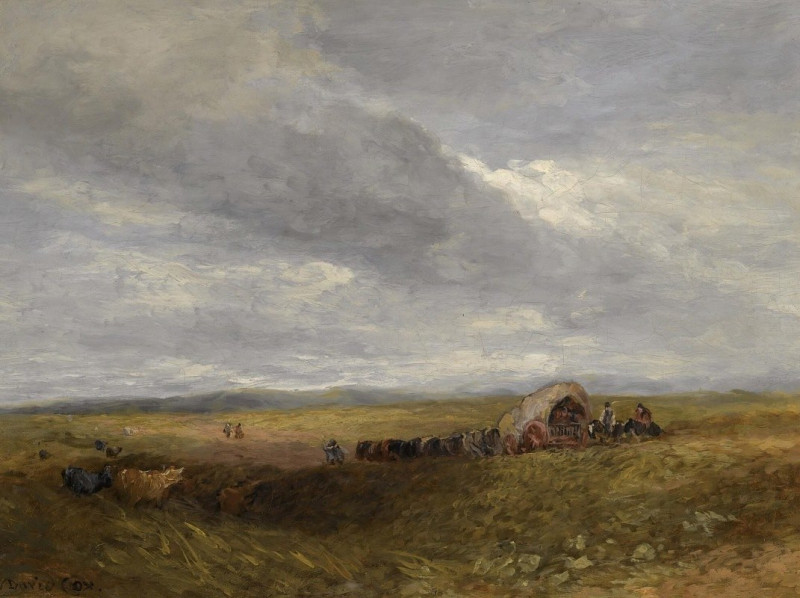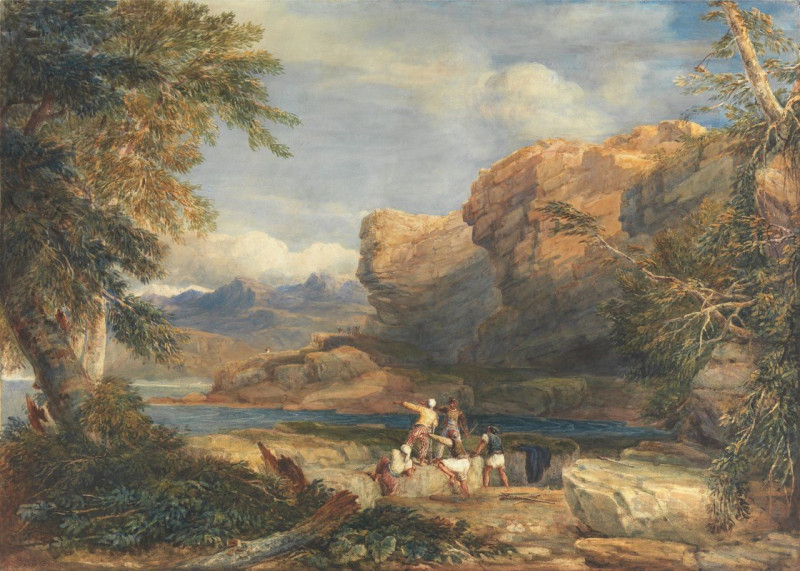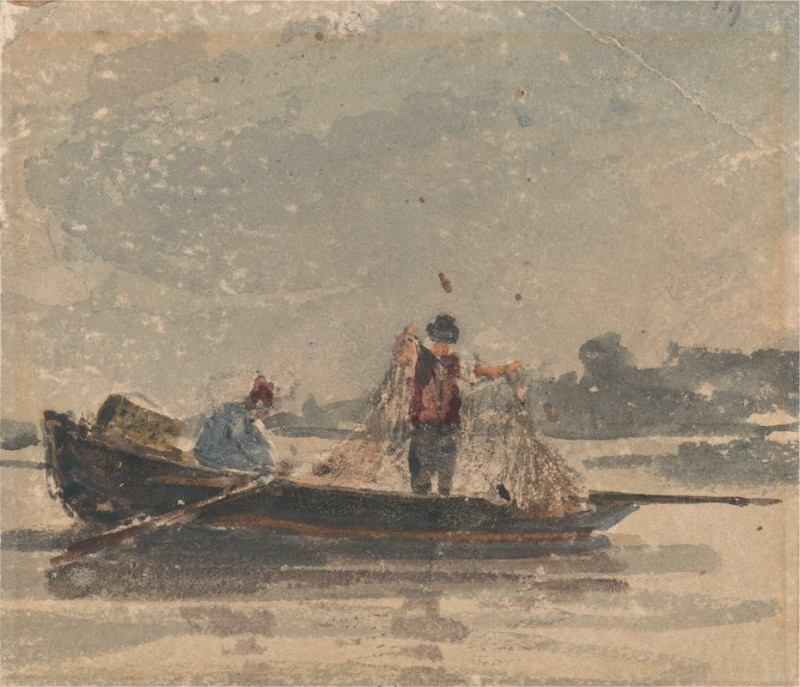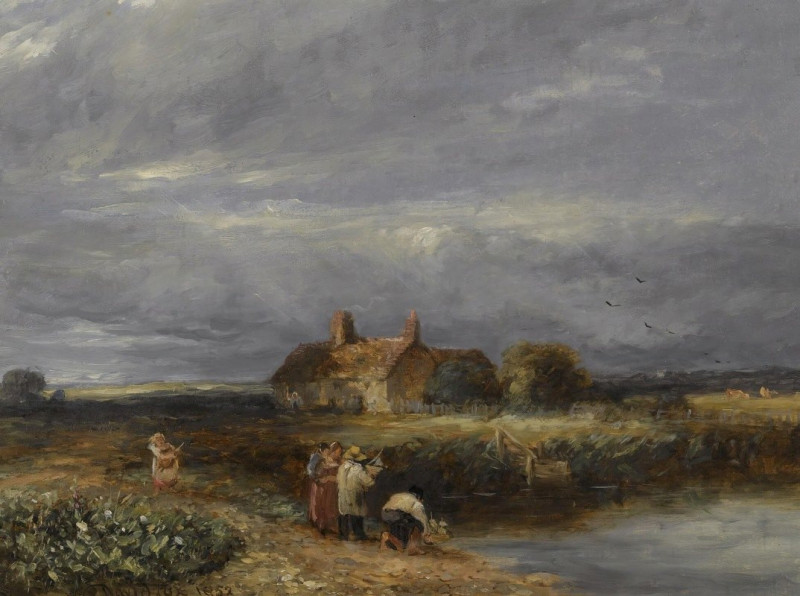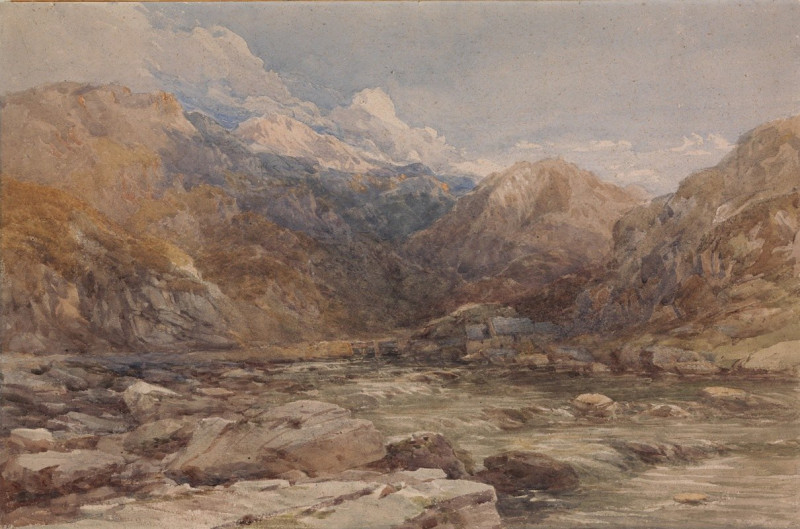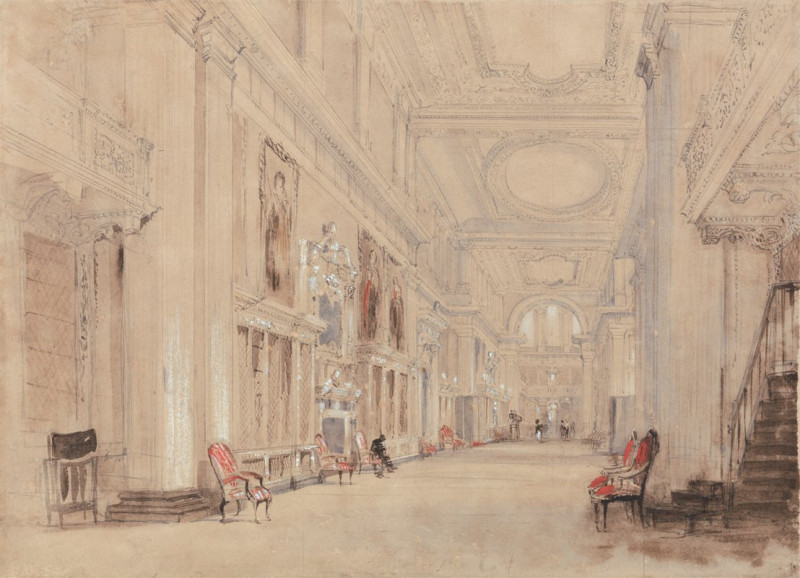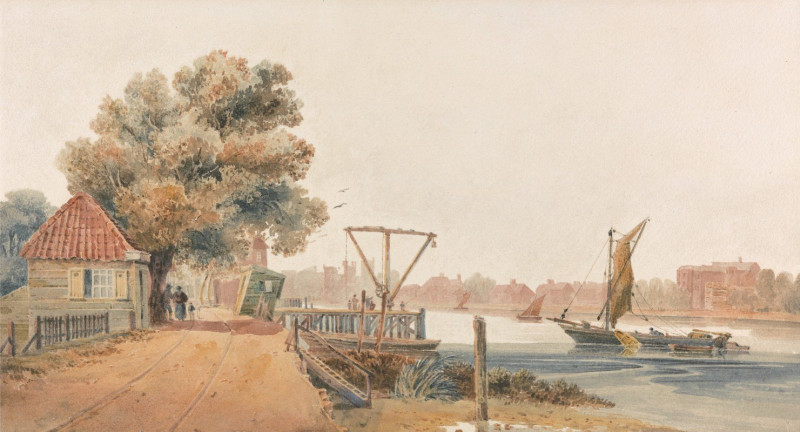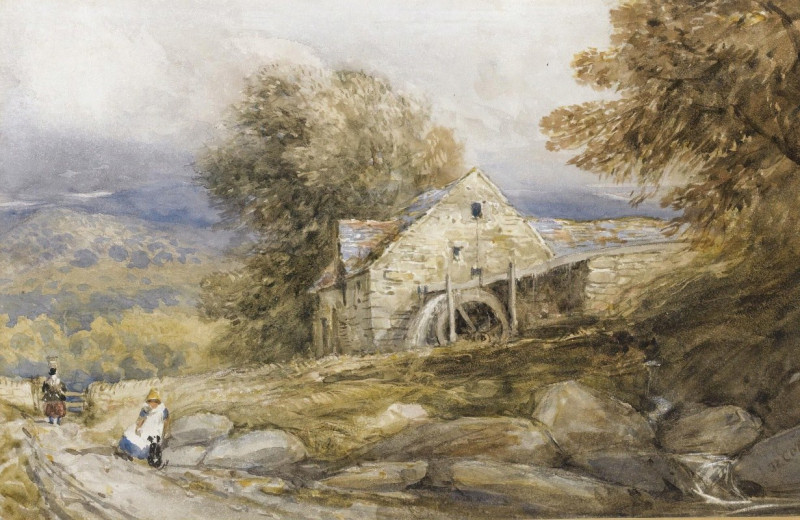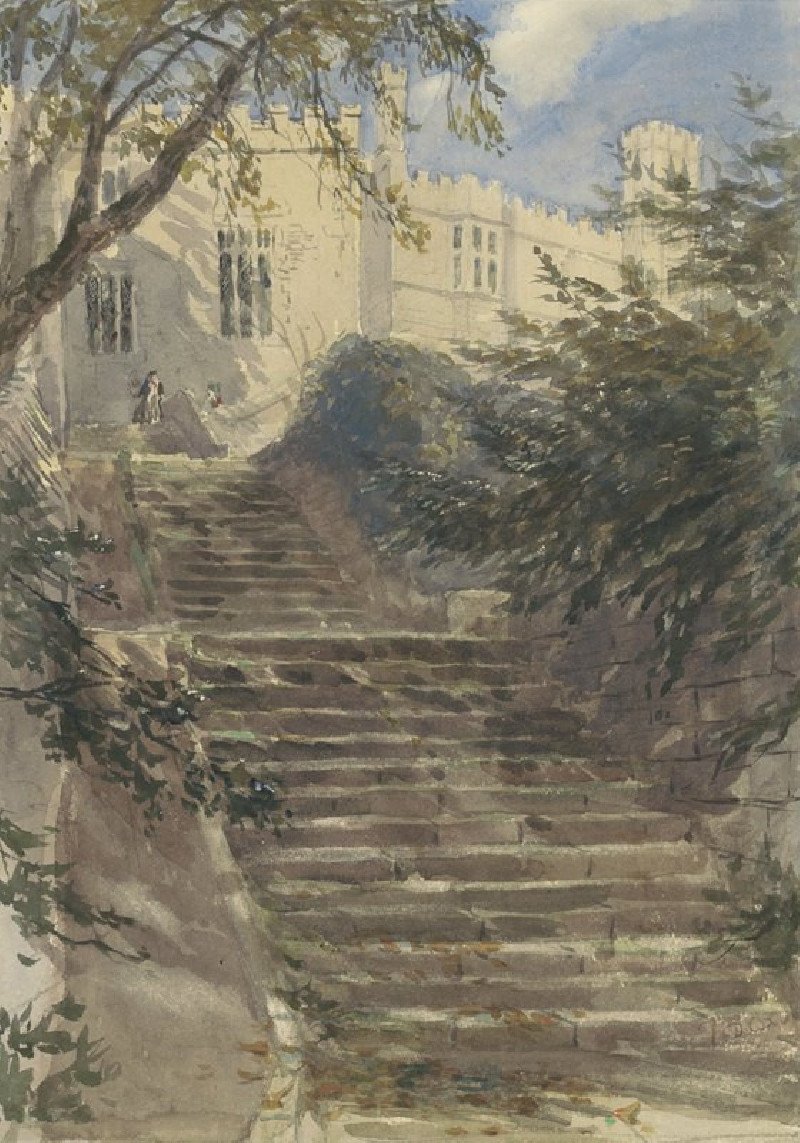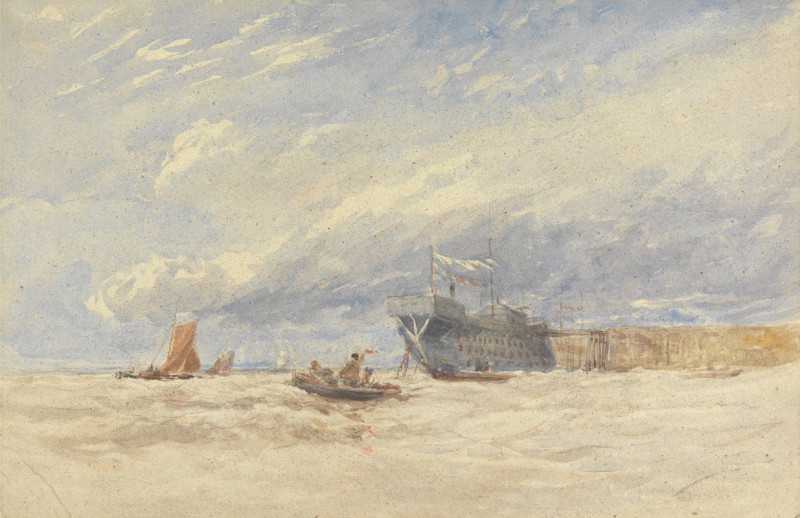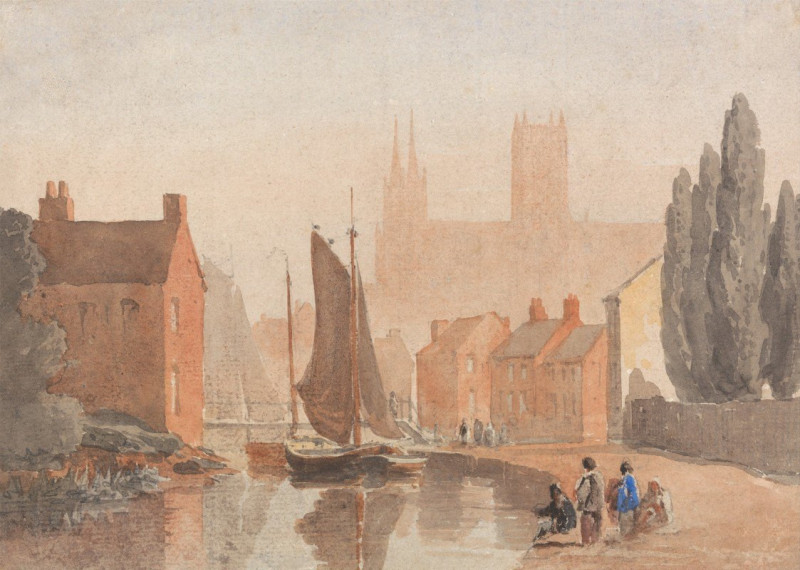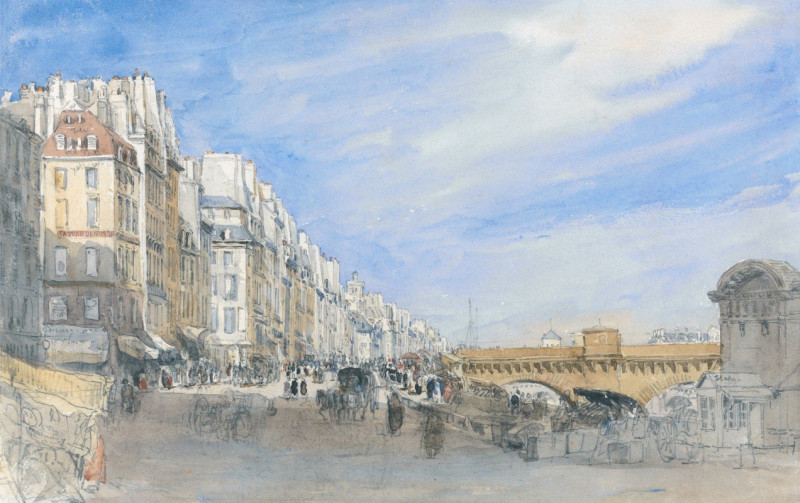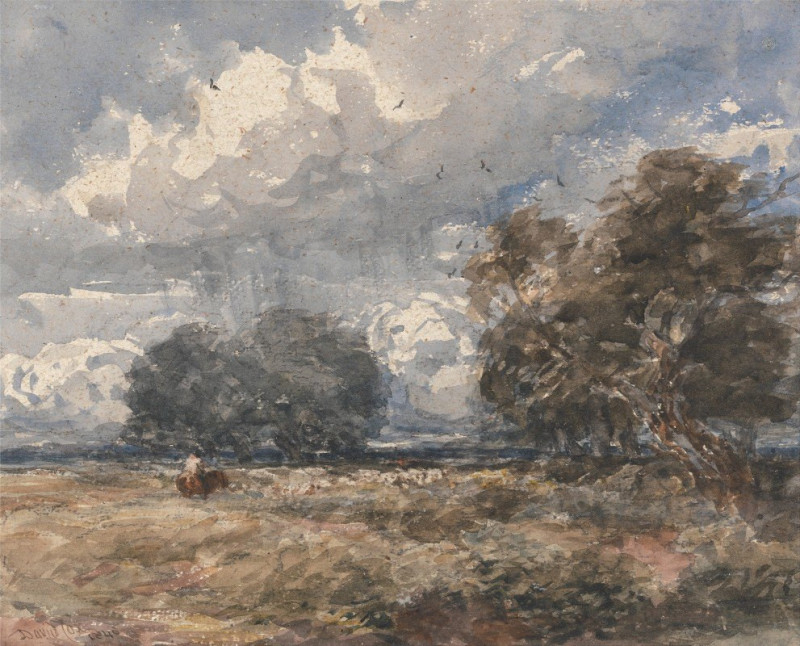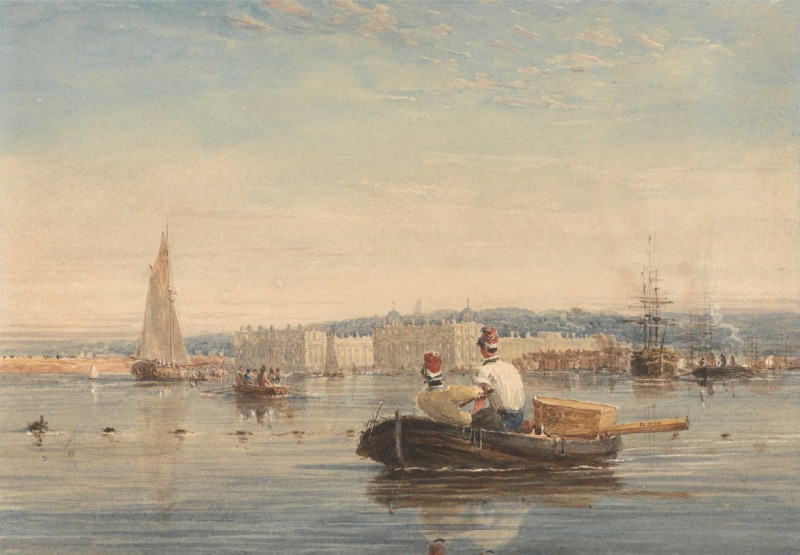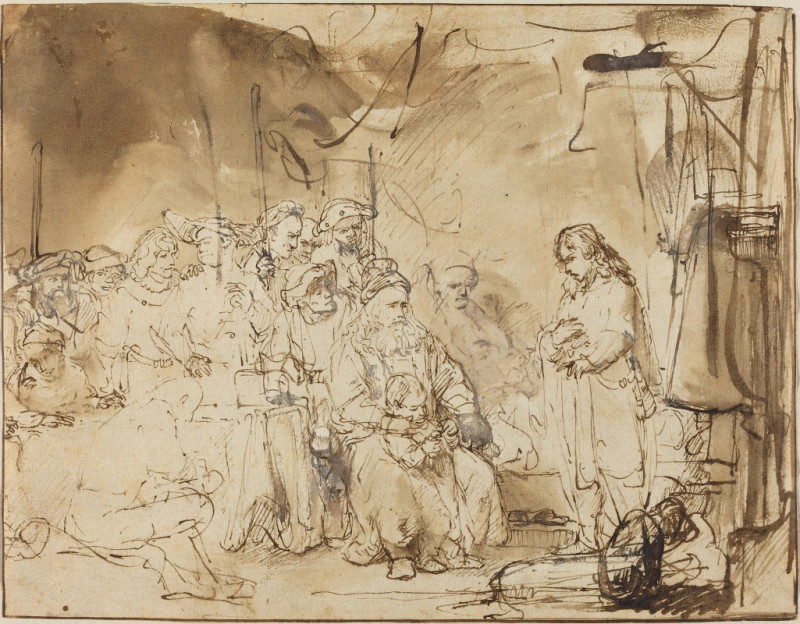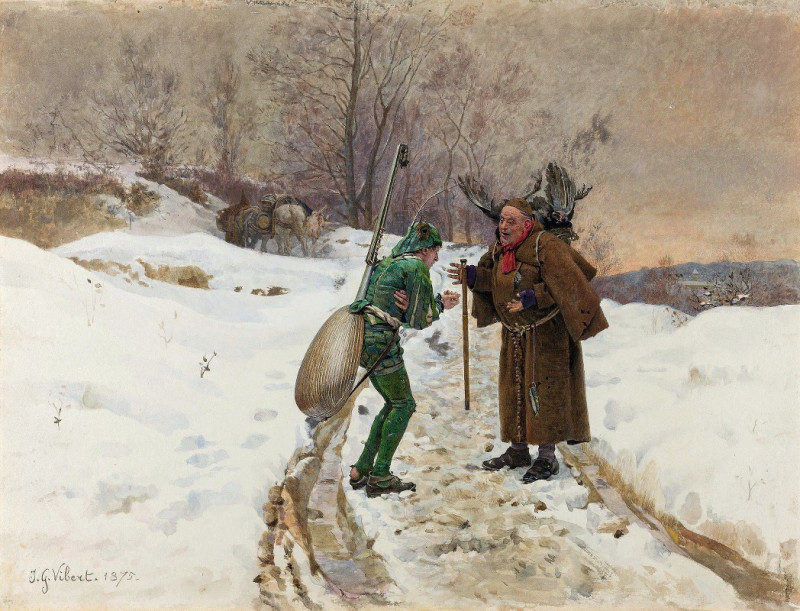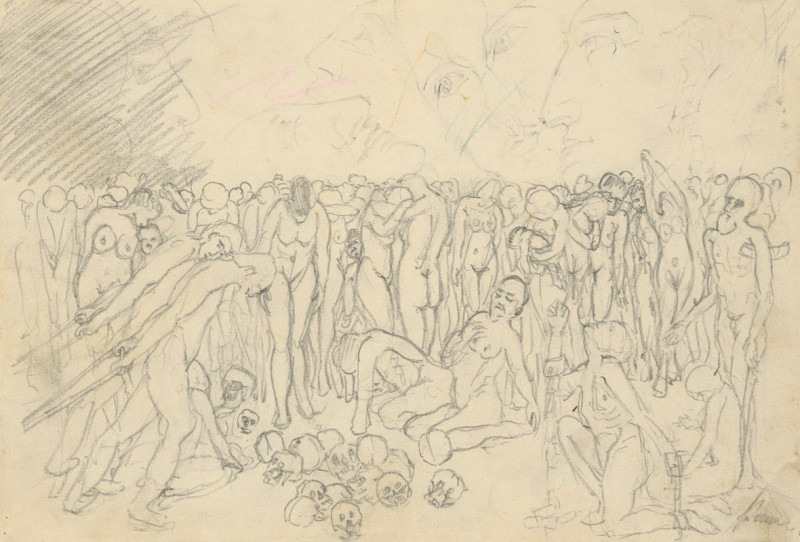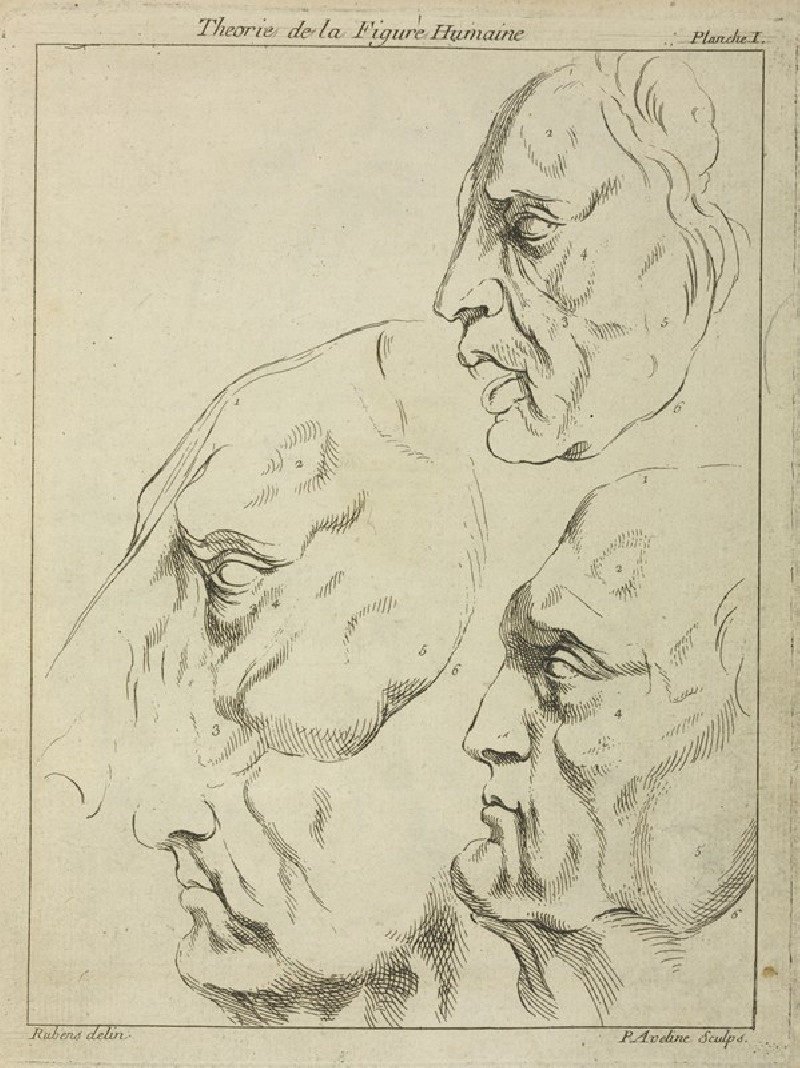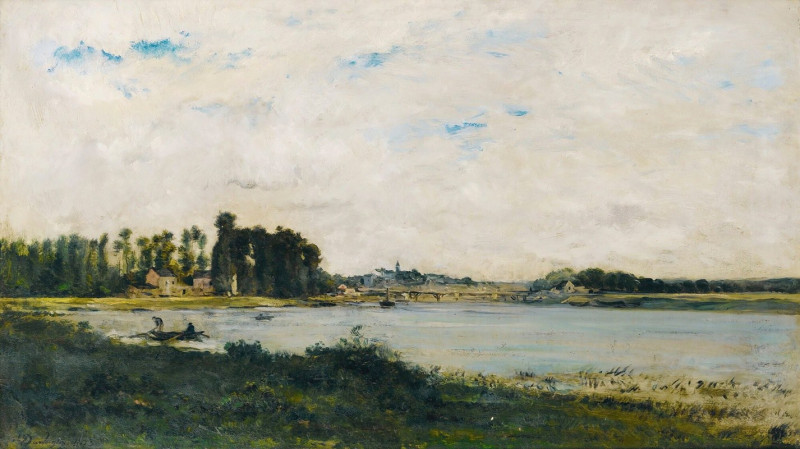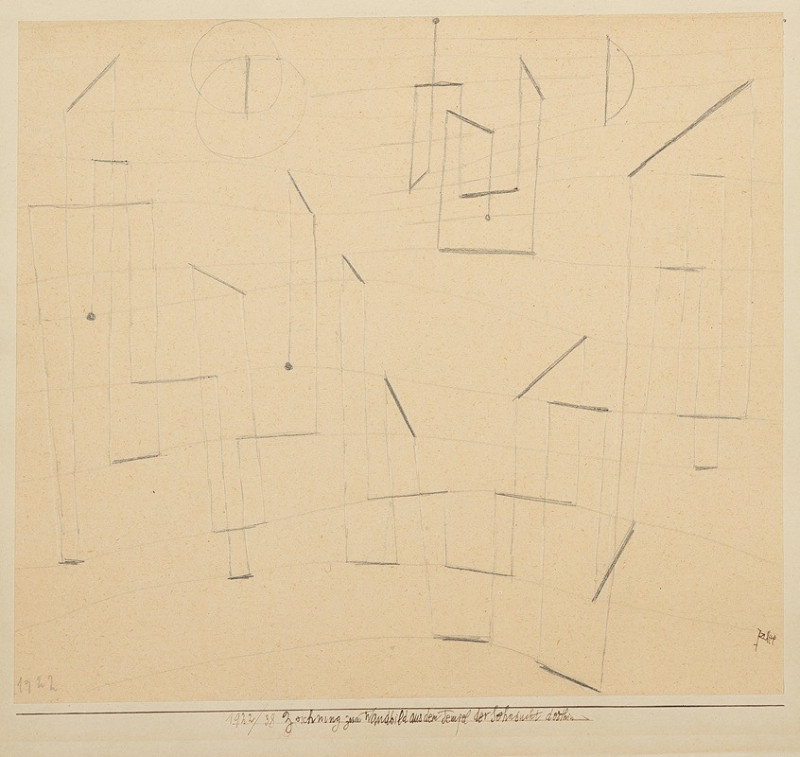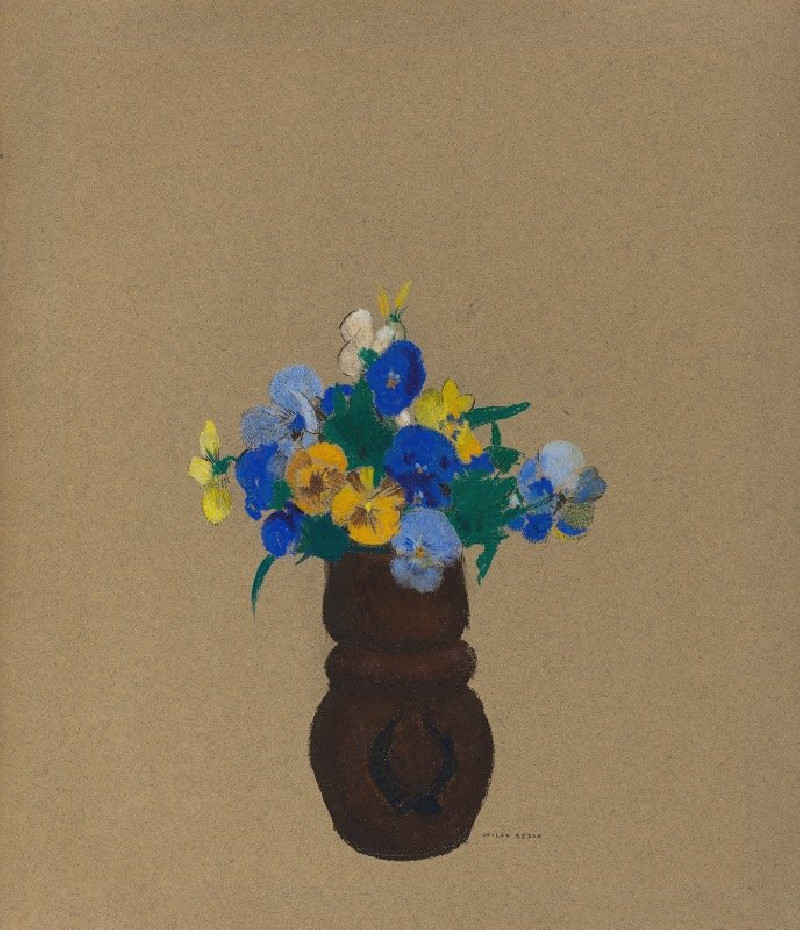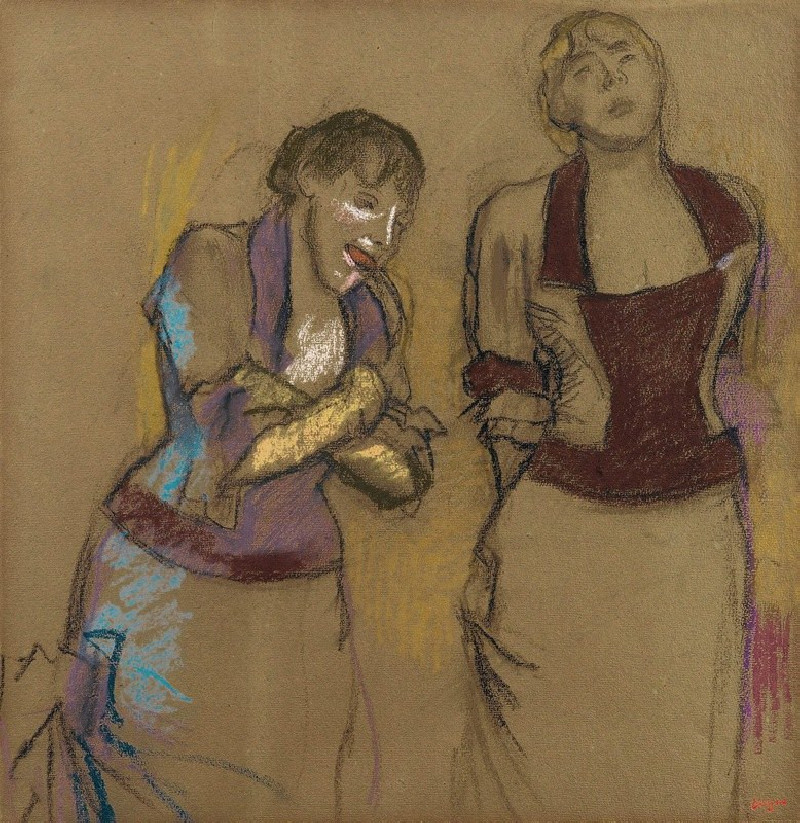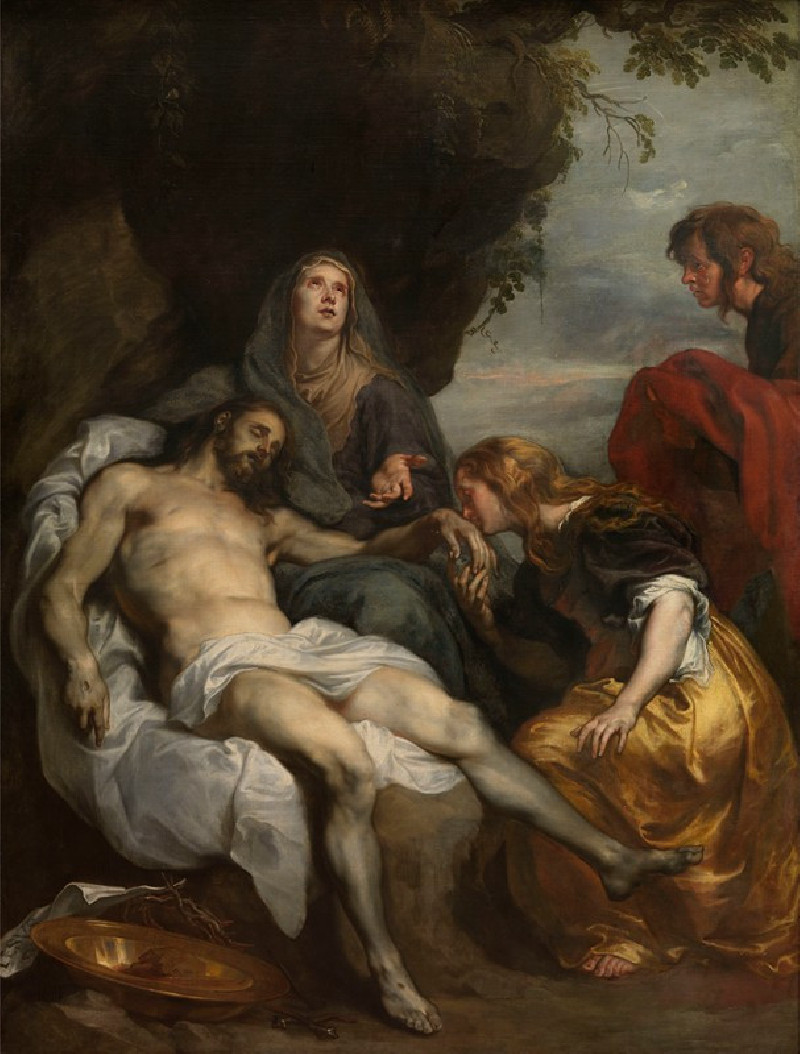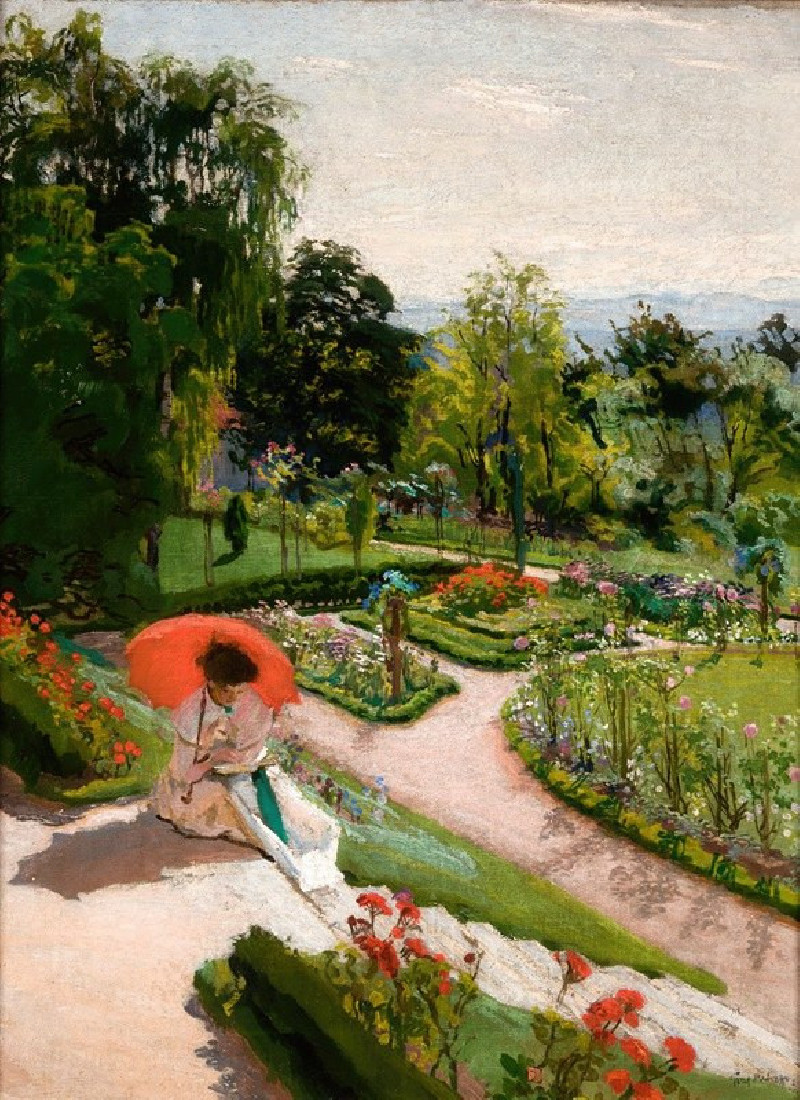Harborne (early 19th century)
Technique: Giclée quality print
Recommended by our customers
More about this artwork
Welcome to a glimpse into the serene village life of the early 19th century through the eyes of the celebrated British artist David Cox. His watercolor masterpiece titled "Harborne" encapsulates the quaint essence of its namesake, a locale once familiar to the artist.The painting, set in the lush, pastoral environment that characterizes much of Cox's work, features a rustic cottage nestled amidst towering trees. A striking red-brick chimney, robust yet worn by the years, draws the eye, symbolizing perhaps the enduring human presence within the landscape. The cottage is portrayed with a gentle dilapidation, its weathered walls and sagging roofline telling tales of many seasons endured. To the right, a figure can be seen, small yet integral, hinting at the daily life and activities that pulse quietly therein.Cox's brushwork allows the viewer to feel the texture of the trees' bark and the roughness of the bricks, while his adept use of light and shadow imbues the scene with a transient, almost ethereal quality of a cloudy sky threatening a soft downpour. This careful balance between detail and impression, structure and nature, anchors the painting firmly in the viewer’s imagination as a peaceful retreat from the bustle of modern life."Harborne" invites us to reflect on the beauty of simplicity and the timeless rhythms of rural existence, themes that remain resonant and comforting in our contemporary world. David Cox's skill in capturing both the mood of the English countryside and the spirit of its people is beautifully showcased in this sensitive, evocative composition.
Delivery
Returns
David Cox (29 April 1783 – 7 June 1859) was an English landscape painter, one of the most important members of the Birmingham School of landscape artists and an early precursor of Impressionism.
He is considered one of the greatest English landscape painters, and a major figure of the Golden age of English watercolour.
Although most popularly known for his works in watercolour, he also painted over 300 works in oil towards the end of his career, now considered "one of the greatest, but least recognised, achievements of any British painter."
His son, known as David Cox the Younger (1809–1885), was also a successful artist.




